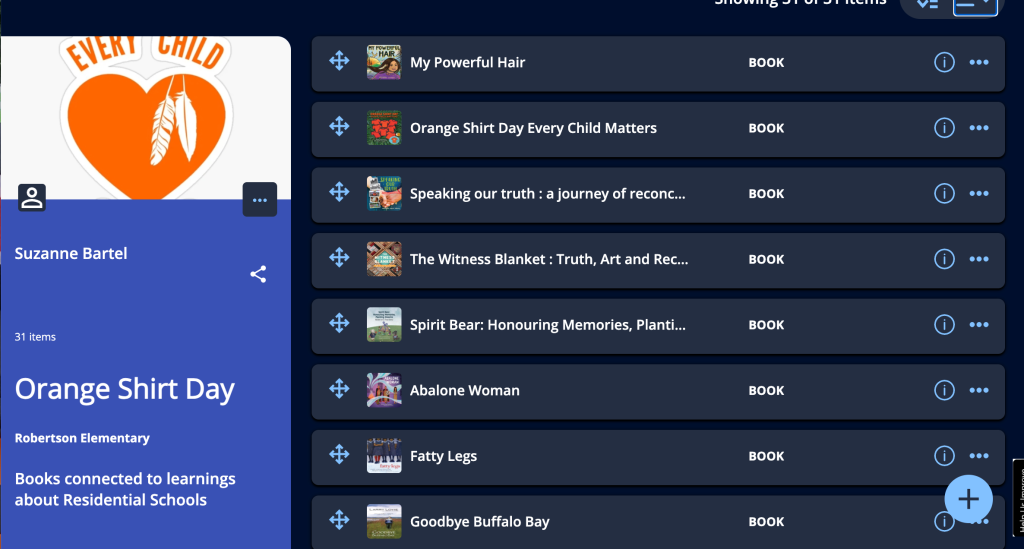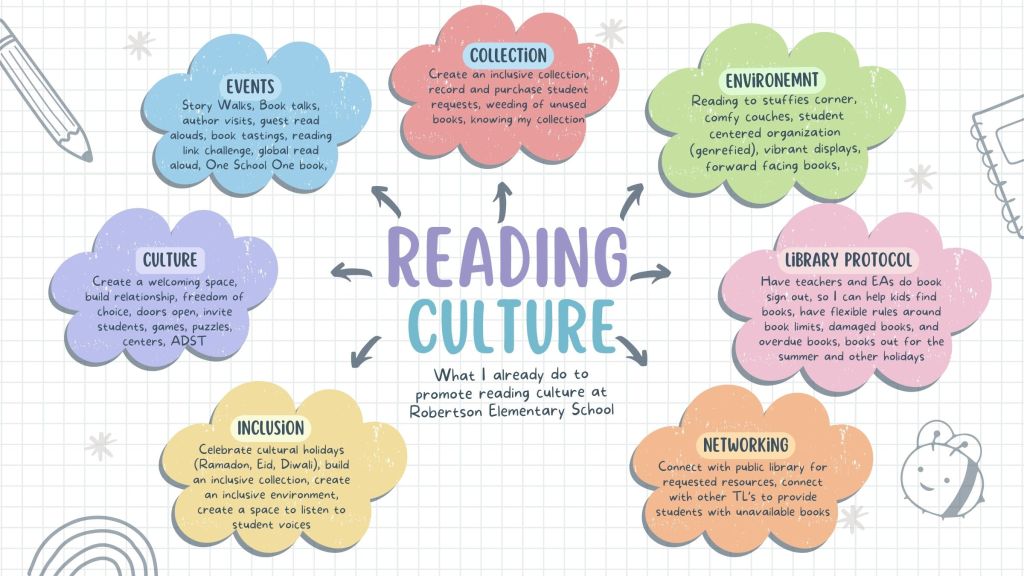The opportunities for children to feel safe, to experience learning opportunities beyond their school have deteriorated so much. That’s why our work is becoming even more important, and we are committed to continue for as long as we can.
Freshta Karim – Founder of Charmaghz Mobile Libraries in Kabul (NcNeilly, 2023)
Bahram Rahman’s book, The Library Bus, caught my attention as I was considering libraries in developing countries this week.
The Library Bus is about a young girl, Pari, who accompanies her mama as they drive their Library Bus through small villages and refugee camps just outside of Kabul. On their journey, Pari learns about how girls were not always allowed to attend school and had to learn to read in secret.
Bahram Rahman, born in Kabul, grew up during the civil war and the Taliban regime (LibrisNotes, 2021). The Library Bus (Rahman, 2020) was inspired by the first library bus to operate in Kabul by a non-profit organization called Charmaghz. The goal of Charmaghz’s library busses is to “encourage critical thinking in children so that they can grow up to be positive and open-minded individuals” (LibrisNotes, 2021).
Mobile Libraries in Kabul
Charmaghz, founded in 2018 and directed by Freshta Karim, currently has 16 active mobile libraries (5 buses, 1 van, and 10 library boxes that go inside schools) in and around Kabul. Each library has over 400 books – servicing over 2000 children under the age of 18 each day (NcNeilly, 2023). Only 7% of children in Afghanistan can read by age 10 and nearly 4 million primary children (mostly girls) are not attending any school at all (NcNeilly, 2023). “Girls education has been hit particularly hard by the Taliban’s return to power, as millions of girls across the country have been barred from secondary education in state schools” (Euronews, 2021). Chaarmaghz provides space for children to play, learn, and envision a new future for their country (NcNeilly, 2023). They give children who do not have the opportunity to go to school, a chance to learn new things. Their tactic is “restorative in nature – aimed at healing the wounds that decades of conflict have had on Afghanistan’s youth” (NcNeilly, 2023).

In NcNeilly’s (2023) podcast interview with Freshta Karim, Karim discusses how providing these safe places for children to come and have a choice in what they do and read is essential in creating a sense of dignity and agency in the children. Karim also points out that when the children read books they are able to imagine and broaden their worldview – they can see what is beyond. For example, if they read a storybook and feel empathy for that character – they can begin to understand complex emotions and experiences. Karim says that she thinks “this helps them a lot in their creativity, understanding, empathy, compassion – all those really important things”.
What’s Missing?
Since the Taliban have returned to power in 2021, Afghan women are seeing more and more freedoms slip away (Nusratty & Crabtree, 2023). Access to education, particularly secondary, was the first thing to go and recently the Taliban have banned women from attending universities. Access to the internet could potentially help to increase access to education, but in a 2022 poll, only 15% of Afghans said they had access to any internet at all. Internet access in Afghan is only available to a small segment of the population, and even that access is censored by the government. Nusratty & Crabtree (2023) argue that any improvement to the country’s internet infrastructure may provide additional learning opportunities for girls and women in Afghan.
Mobile Libraries in other locations around the developing world already have developed the capability to offer technology to their communities. An example are the donkey libraries in Biblioburro, Columbia, which now include a digital program – supporting rural populations to access technology by bringing in laptops and modems and teaching children about the internet (Mitchell, 2018). Another example is the Idea Boxes that are put into rural areas of Australia, Senegal, and impoverished communities in the US. These mobile digital libraries are energy independent and easy to set up – they give rural communities access to satellite internet connection as well as multiple devices (Ferreira, 2022).
Mobile libraries around the world already contain access to digital resources such as e-books, audiobooks, and online databases (Lisedunetwork, 2016). These integrated technologies “ensure that even in areas with limited physical resources, individuals can still access a vast array of knowledge. Mobile libraries leverage technology to bridge the digital divide, empowering individuals with digital skills needed in today’s world” (Lisedunetwork, 2016).
Is this a possibility in Kabul? No doubt, if it was, Charmaghz would be navigating this. So how can we begin to bridge this massive digital gap? Where the equity issues around experience and content are so incredibly enormous and digital access is pretty much non existent. Miller & Bass (2019) state that “libraries and librarians should see themselves as leaders in this work and be constant voices advocating for equity of devices and internet access for all.”
Does this include Kablul?
Conclusion
And so I am left inspired – by Karim’s massive efforts in working to educate children in and around Kabul.
And I am left discouraged – by the fact that even with these efforts, the gap in education for these children is overwhelmingly immense.
But mostly, I am left with hope.
Because something is always better than nothing. Mobile libraries are essential because they represent what libraries value – equal and equitable access for all (Ferreira, 2022). These libraries may not be a magical solution to the substantial challenges Afghan children face, but Karim says, “they do offer a place where they can “improve their critical thinking skills, ask questions and as a result imagine a world beyond war, then hopefully create it when they grow up” (Cuthbert, 2022).

Inspired to help?
- Donate to the Charmaghz non-profit organization
- Follow Charmaghz.library and Freshta Karim on Instagram to learn of new initiatives and to help educate others on their initiative
Works Cited
Charmaghz. An Opportunity for Critical Thinking. Retrieved from https://charmaghz.org/
Cuthbert, O. (2022). Mobile Libraries Bring Books and Hope to Afghan Children. Retrieved from https://ideasbeyondborders.org/afghan-childern-libraries/
Euronews (2021). Mobile libraries restart for the first time in Kabul since Taliban takeover. Retrieved from https://www.euronews.com/2021/12/07/mobile-libraries-restart-for-the-first-time-in-kabul-since-taliban-takeover
Ferreira, L. (2022). Mobile libraries: the past, the present, the future. Western University. Retrieved from https://ir.lib.uwo.ca/cgi/viewcontent.cgi?article=1003&context=fims_evolvingtech_finalproj_winter2022
Karim, F (2023). Today is @globalgiving July bonus day. It’s your chance to support the @charmaghz.library Van library. Instagram, 12 July 2023 https://www.instagram.com/freshtakarim/?hl=en
LibrisNotes (2021). The library bus by Bahram Rahman. Retrieved from http://librisnotes.blogspot.com/2021/01/the-library-bus-by-bahram-rahman.html
Lisedunetwork (2016). Concept of Mobile Library. Retrieved from https://www.lisedunetwork.com/concept-mobile-libraries/#:~:text=Many%20mobile%20libraries%20now%20integrate,a%20vast%20array%20of%20knowledge.
McNeilly, M & Karim, F. (2023). Afghanistan’s Mobile Libraries: A conversation with Freshta Karim. New Tactics in Human Rights. Retrieved from https://www.newtactics.org/conversation/afghanistans-mobile-libraries-conversation-freshta-karim#:~:text=Charmaghz%20has%2016%20mobile%20libraries,than%202%2C000%20children%20per%20day.
Miller, S. M., & Bass, W. (2019). Leading from the Library: Help your School Community Thrive in the Digital Age. International Society for Technology in Education
Mitchell, C (2018). For the love of books: Mobile libraries around the world. Aljazeera. Retrieved from https://www.aljazeera.com/features/2018/4/23/for-the-love-of-books-mobile-libraries-around-the-world
Nusratty, K. & Crabtree S. (2023). Digital freedom out of reach for most Afghan Women. Retrieved from https://news.gallup.com/opinion/gallup/471209/digital-freedom-reach-afghan-women.aspx#:~:text=In%20Gallup’s%202022%20World%20Poll,has%20been%20stable%20since%202016.
Rahman, B. (2020). The Library Bus. Pajama Press Inc. Toronto, Ontario.








